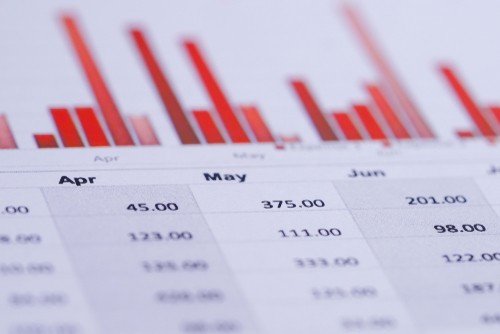Forex trading (Forex, or FX), derived from the English Foreign Exchange acronym, is a fundamental part of the global financial market.
Our Forex Signals
1 - month
Subscription
 Up to 15 signals daily
Up to 15 signals daily 76% success rate
76% success rate Entry, take profit & stop loss
Entry, take profit & stop loss Amount to risk per trade
Amount to risk per trade Risk reward ratio
Risk reward ratiomonth
3 - month
Subscription
 Up to 15 signals daily
Up to 15 signals daily 76% success rate
76% success rate Entry, take profit & stop loss
Entry, take profit & stop loss Amount to risk per trade
Amount to risk per trade Risk reward ratio
Risk reward ratiomonth
 Most popular
Most popular
6 - month
Subscription
 Up to 15 signals daily
Up to 15 signals daily 76% success rate
76% success rate Entry, take profit & stop loss
Entry, take profit & stop loss Amount to risk per trade
Amount to risk per trade Risk reward ratio
Risk reward ratiomonth
Lifetime
Subscription
 Up to 15 signals daily
Up to 15 signals daily 76% success rate
76% success rate Entry, take profit & stop loss
Entry, take profit & stop loss Amount to risk per trade
Amount to risk per trade Risk reward ratio
Risk reward ratioSeparate Swing Trading Group
 Up to 3 signals weekly
Up to 3 signals weekly 76% success rate
76% success rate Entry, take profit & stop loss
Entry, take profit & stop loss Amount to risk per trade
Amount to risk per trade Risk reward ratio
Risk reward ratiomonth
1 - month
Subscription
 Up to 15 signals daily
Up to 15 signals daily 76% success rate
76% success rate Entry, take profit & stop loss
Entry, take profit & stop loss Amount to risk per trade
Amount to risk per trade Risk reward ratio
Risk reward ratiotime
3
Payment methods
Trading platforms
Regulated by
Support
Min.Deposit
Leverage max
Currency Pairs
Classification
Mobile App
Min.Deposit
$100
Spread min.
Variables pips
Leverage max
100
Currency Pairs
40
Trading platforms
Funding Methods





Regulated by
FCA
What you can trade
Forex
Indices
Actions
Cryptocurrencies
Raw Materials
Average spread
EUR/GBP
-
EUR/USD
-
EUR/JPY
0.3
EUR/CHF
0.2
GBP/USD
0.0
GBP/JPY
0.1
GBP/CHF
0.3
USD/JPY
-
USD/CHF
0.2
CHF/JPY
0.3
Additional Fee
Continuous rate
Variables
Conversión
Variables pips
Regulation
Yes
FCA
No
CYSEC
No
ASIC
No
CFTC
No
NFA
No
BAFIN
No
CMA
No
SCB
No
DFSA
No
CBFSAI
No
BVIFSC
No
FSCA
No
FSA
No
FFAJ
No
ADGM
No
FRSA
71% of retail investor accounts lose money when trading CFDs with this provider.
Min.Deposit
$100
Spread min.
- pips
Leverage max
400
Currency Pairs
50
Trading platforms
Funding Methods




Regulated by
CYSECASICCBFSAIBVIFSCFSCAFSAFFAJADGMFRSA
What you can trade
Forex
Indices
Actions
Cryptocurrencies
Raw Materials
Etfs
Average spread
EUR/GBP
1
EUR/USD
0.9
EUR/JPY
1
EUR/CHF
1
GBP/USD
1
GBP/JPY
1
GBP/CHF
1
USD/JPY
-
USD/CHF
1
CHF/JPY
1
Additional Fee
Continuous rate
-
Conversión
- pips
Regulation
No
FCA
Yes
CYSEC
Yes
ASIC
No
CFTC
No
NFA
No
BAFIN
No
CMA
No
SCB
No
DFSA
Yes
CBFSAI
Yes
BVIFSC
Yes
FSCA
Yes
FSA
Yes
FFAJ
Yes
ADGM
Yes
FRSA
71% of retail investor accounts lose money when trading CFDs with this provider.
Min.Deposit
$50
Spread min.
- pips
Leverage max
500
Currency Pairs
40
Trading platforms
Funding Methods




What you can trade
Forex
Indices
Actions
Raw Materials
Average spread
EUR/GBP
-
EUR/USD
-
EUR/JPY
-
EUR/CHF
-
GBP/USD
-
GBP/JPY
-
GBP/CHF
-
USD/JPY
-
USD/CHF
-
CHF/JPY
-
Additional Fee
Continuous rate
-
Conversión
- pips
Regulation
No
FCA
No
CYSEC
No
ASIC
No
CFTC
No
NFA
No
BAFIN
No
CMA
No
SCB
No
DFSA
No
CBFSAI
No
BVIFSC
No
FSCA
No
FSA
No
FFAJ
No
ADGM
No
FRSA
71% of retail investor accounts lose money when trading CFDs with this provider.
The importance of foreign exchange trading comes from its daily trading volume of up to 5.5 trillion US dollars.
For investors, this is the world’s largest and fast-growing financial market. In the most fundamental aspect, this is a foreign currency trading market where currencies from all over the world are exchanged.

One of the crucial factors that make the foreign exchange market so interesting is the variety of events that drive market development.
These events may vary considerably from inside or from the outside, and the areas covered include geopolitics, government news, social news, and macroeconomics.
Throughout history, those events that have profound influence have considerably changed the environment of foreign exchange trading. Below you can see some of the most influential events that shaped the Forex market.
Exchange Market History
The money began to be used during the time of the pharaohs, although the Babylonians were the first to use notes and receipts.
Since in the Middle East, each town had its own currency, foreign currency transactions arose to facilitate commercial exchange between different individuals, regions, and towns.
During the middle ages, merchants found themselves in need of a more convenient means of payment, which led to the adoption of notes representing money.
This process then later became banknotes. The economy of the nations that opted for the use of notes began to flourish.
History of foreign exchange transactions
The foreign exchange market we know now originated in 1973. Of course, the exchange of currencies between different countries arose in an earlier period. Before World War II, the most widely used currency in the world was the pound.
In World War II, the desperate struggle between Britain and Germany shook the status of the pound. While the US dollar was weakened during the Great Depression of 1929, the gradual strengthening of the US economy during World War II made it the most widely used currency in the world.
In the following decades, the strong position of the US dollar was maintained and further strengthened, making the United States the most important economic force in the world today.
Bretton Woods Agreement
Bretton Woods is part of Carroll’s township in New Hampshire, a small state in the United States. In 1944, following the convening of the United Nations Monetary and Financial Conference, the participating countries reached an agreement, and a new system was born at the meeting, known as the Bretton Woods System.
The conference was held at the Mount Washington Hotel and was attended by 45 countries. The agreement signed at the end of the meeting gave the International Monetary Fund (IMF) a central position in the system.
The system thus established is called the “Gold Exchange Standard System.” In short, the Bretton Woods system has also developed a gold-money standard through an adjustable fixed exchange rate system.
This agreement makes the dollar-pegged to gold, while other currencies are pegged to the dollar.
The agreement is priced at $35 for 1 ounce of gold. Countries with US dollars can convert dollars into gold through their central bank. Private individuals with dollars can turn them into gold through free markets. The purpose of the Bretton Woods system is to introduce an agreement that stabilizes the exchange rate, allowing it to cope with short-term fluctuations and to prevent exchange rate depreciation. For this purpose, the deal gives the IMF a central role in the management of the system.
Smithsonian Agreement
In March 1971, the Council of Europe drafted and adopted the Werner Plan to lead its common market to the economy and the currency union.
Within the framework of the Werner Plan, the participating countries agreed to try to maintain the stability of European currencies against each other to counter the volatility.
Exchange rate fluctuations between European currencies are restricted (snakes), but their variations (holes) with the US dollar are relatively larger. Therefore, this system is called “the snake in the hole.”
Groups of ten countries, including Belgium, Canada, France, Germany, Italy, the Netherlands, Switzerland, Sweden, the United Kingdom, and the United States, met at the Smithsonian Institution in Washington in December 1971 and signed the Smithsonian Agreement.
This agreement depreciates the dollar against other currencies. But in a brief period, the depreciation of the dollar proved to be inadequate. In the face of speculative attacks on the US dollar, the US dollar made a 10% devaluation on February 12, 1973.
However, speculators became so crazy that the foreign exchange market had to close between March 1 and 18, 1973.
When the foreign exchange market reopened on March 19, the exchange rate between the US dollar against the yen and other major European currencies was free to float. Although initially this was only seen as a temporary agreement, it actually marked the birth of a new system: the floating exchange rate system.
European currency system

In 1972, the European Common Market decided to reduce its currency’s dependence on the dollar. The first initiative was the formation of the European Joint Floating System, established by the Netherlands, Belgium, Italy, France, West Germany, and Luxembourg.
The agreement allows the exchange rate to fluctuate within a larger range than is initially set by the Bretton Woods system.
After the collapse of the Bretton Woods system and the signing of the Smithsonian Agreement, European countries met again in April 1972. They decided that serpentine fluctuations should be carried out between ±2.25percent, while the range of dynamic fluctuations should be ±4.50%. In 1973-80, a series of agreements on currency exchange rates were reached.
In December 1978, the European Council agreed to establish the European Monetary Union. In 1979, the European Currency Unit (ECU) was introduced. The Euro officially replaced the ECU after January 1, 1999.
Forex as we see today
The floating exchange rate system allows the value of money to float per the basic principles of supply and demand. Today, the foreign exchange market is the world’s largest and most liquid market.
Every day, the interbank trading market has a lot of speculative and commercial trading volume. A large bank can even trade up to a billion dollars a day.
Some transactions are executed on behalf of their clients, but at the same time, more transactions are performed for the bank and its shareholders.
Until recently, Forex brokers have been able to achieve large transaction volumes by combining a large number of anonymous small-value parties and then inter-bank transactions.
Today, this process has been correctly ported to electronic systems. Thanks to the development of technology, traders can complete all transactions independently in milliseconds.
AvaTrade - Established Broker With Commission-Free Trades

- Minimum deposit of just 250 USD to get lifetime access to all the VIP channels
- Awarded Best Global MT4 Forex Broker
- Pay 0% on all CFD instruments
- Thousands of CFD assets to trade
- Leverage facilities available
- Instantly deposit funds with a debit/credit card

Some numbers in Forex trading
- The New York Stock Exchange (NYSE) trades around $25 billion a day. In contrast, the daily trading volume of the foreign exchange market averages around $5.5 trillion.
- Of the daily trading volume in the foreign exchange market, only 5% is caused by transactions between the government and the company, and the rest comes from speculative trading.
- 80% of the positions are held for less than seven days.
- 40% of the positions are held for less than two days.
- 85% of transactions are related to major currencies.
- 28% of transactions are related to the EUR/USD currency pair.

